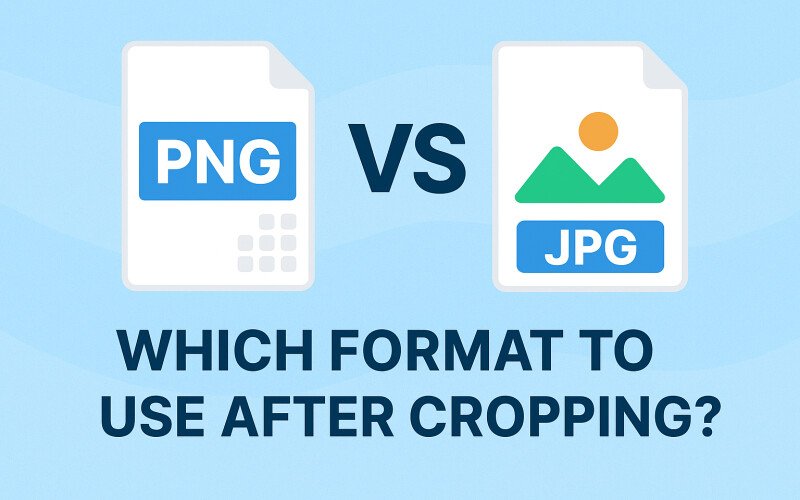PNG vs. JPG: Which Format to Use After Cropping?
Post date:- 14 August 2025

When working with images, one of the first questions after editing or cropping is: what format should I save them in? PNG and JPG are the two most common image formats, each with their own advantages and disadvantages. Choosing the right format depends on your needs, whether it's quality, file size, or compatibility.
Understanding PNG and JPG
PNG (Portable Network Graphics)
- Lossless Compression: PNG preserves all the details of your image without quality loss.
- Transparency Support:PNG supports transparent backgrounds, making it ideal for logos or graphics that require layering.
- Higher File Size: Since PNG is lossless, file sizes are typically larger than JPG, especially for photographs.
JPG (Joint Photographic Experts Group)
- Lossy Compression: JPG reduces the file size by reducing the quality of the image to some extent. The more you compress, the more the quality will decrease.
- Best for Photographs: JPG handles detailed images, such as photographs, well, as slight losses in quality are often not noticeable.
- Smaller File Size: Ideal for web use where fast loading is important.
Cropping Considerations
When you crop an image, two main factors come into play: quality retention and file size.
1. Quality Retention
- PNG retains the exact pixels of your cropped image. No detail is lost, so it's great for high-resolution graphics, text-heavy images, or images with sharp edges.
- JPGs can introduce compression artifacts, especially if you save multiple times. This can cause details to become blurry after cropping.
2. File Size
- Cropped JPGs are smaller than PNGs, which is useful for websites or email attachments.
- If your image has large areas of solid color (such as icons or illustrations), PNG can sometimes be smaller than a high-quality JPG.
When to Use PNG After Cropping
- Images containing text, logos, or graphics where clarity is important.
- Images requiring a transparent background.
- Images that will be edited frequently (PNG avoids degradation from multiple saving).
When to Use JPG After Cropping
- Photographs or realistic images where a little compression is acceptable.
- Images where file size matters more than absolute pixel-perfect quality.
- Web images, social media posts or email attachments where fast loading is required.
Quick Tips
- If you plan to edit your image multiple times, always keep a master PNG copy, then export a JPG for the web or sharing.
- Use high-quality JPG settings (80–90%) to minimize quality loss while keeping file sizes manageable.
- Consider the image content: simple graphics prefer PNG, photos prefer JPG.